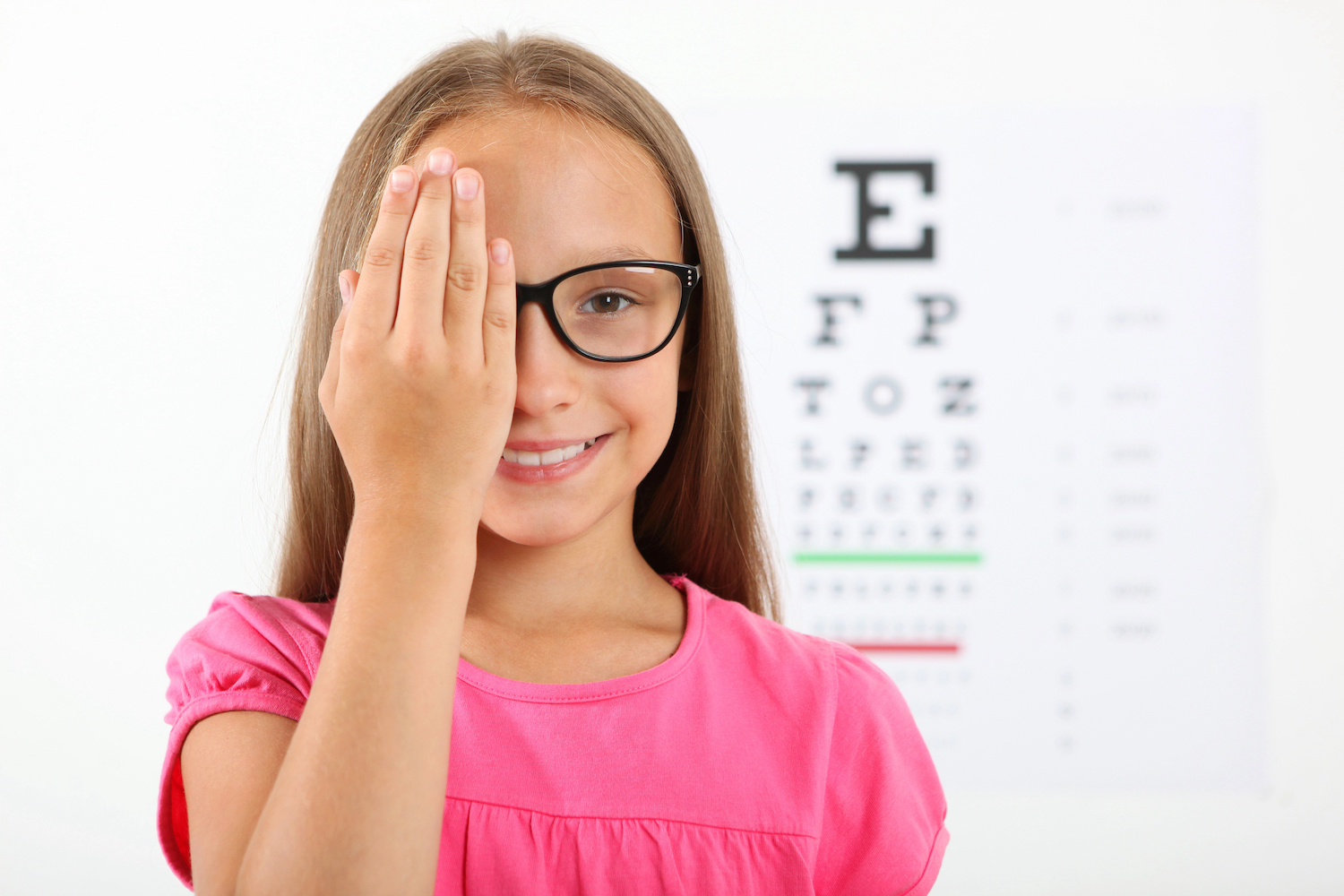Luke Arundel, Chief Clinical Officer, Optometry Australia, and founding member of the Australia and New Zealand Child Myopia Working Group.
Did you know children learn more from their vision than all other senses combined, and eye disorders are amongst the most common long-term health problems experienced by children[1].
A boom in childhood myopia – or short sightedness – is an emerging concern. Myopia is a common eye condition that causes blurred distance vision and usually starts during childhood, typically progressing until the child stops growing.
More children than ever are at risk of developing myopia through a variety of factors including increased screen time and decreased ‘green time’ (time spent outdoors). With the COVID-19 pandemic having caused lockdowns around the world, researchers are already starting to see signs that lockdowns may have further accelerated the rates of myopia development in children.
It’s important for parents to take their children for a regular eye examination to give them the best chance at success in the classroom, sports field and in the playground.
A Global Surge in Myopia: What Parents Need to Know
Myopia is a common eye condition that causes blurred distance vision. It usually starts in childhood and tends to progress until the child stops growing. While genetics play a role, environmental factors are now accelerating its spread, and our screen-filled, indoor-focused lifestyles may be to blame.
Children today spend more time indoors, eyes glued to screens and books, and less time outdoors soaking up natural light. Researchers are now linking this shift to a concerning rise in childhood myopia, especially in recent years following the global lockdowns.
The Importance of Regular Eye Examinations With An Optometrist
Good vision is vital to the educational, social, behavioural and physical development of a child. From having trouble reading something on the whiteboard or avoiding reading as getting sore eyes from close work, there are a range of ways myopia can impact learning. Poor vision can also make it difficult to read other kids facial expressions or do fun things like catch a ball and play sports.
Some children are inaccurately labelled as slow learners, lacking confidence or even troublemakers when they actually have an undetected vision condition which can be identified and corrected with a simple visit to the optometrist. Some vision problems can be treated with simple eye exercises to strengthen or train eye muscles without the need for glasses to be prescribed.
While some signs of myopia are obvious, others are harder to identify, and children at a young age may not tell a parent there is anything ‘wrong’ as they assume everyone sees the world as they do.
Good Vision Powers Confidence, Learning and Play
Vision isn’t just about seeing—it’s central to how kids interact with the world. Whether it’s reading from the whiteboard, catching a ball, recognising facial expressions or developing confidence in class, poor eyesight can impact every aspect of life.
Unfortunately, many children won’t tell you something’s wrong—they may not even realise their vision is different from anyone else’s. This is why regular, comprehensive eye examinations are essential.
Without them, children can be mislabelled as slow learners, disruptive or lacking in confidence, when the true issue is simply a correctable vision condition. Some eye problems can even be improved with exercises to strengthen the eyes—without the need for glasses at all.
Why Managing Myopia Is Important
It’s easy to think of short-sightedness as just needing glasses. But it’s important to realise that childhood myopia isn’t just a temporary inconvenience, especially when left unmanaged. High levels of myopia can lead to permanent vision loss later in life, increasing the risk of serious conditions like glaucoma, cataracts, and retinal damage (affecting the retina, the vital light-sensing layer at the back of the eye).
Fortunately, this is a space where science is rapidly advancing. Thanks to ongoing research and innovation, optometrists now have an impressive arsenal of modern management options. These tools go beyond simply correcting blurry vision—they can actively slow the progression of myopia, helping protect children’s vision well into adulthood.
That’s why it’s crucial for children to have a comprehensive eye examination with an optometrist before they start school, and to continue having regular checks throughout their primary and secondary years. Vision care shouldn’t be reactive—it should be a routine part of a child’s health regime, just like dental check-ups or immunisations.
Why School Screenings Aren’t Enough
You might assume that if your child has passed a school vision screening, their eyesight is fine—but that can be a risky assumption. Basic screenings are often limited in scope, rarely checking how well the eyes work together or assessing overall eye health. Early signs of issues like myopia or eye coordination problems can easily be missed.
Parents shouldn’t assume their child’s vision is fine just because there are no obvious symptoms, or rely on a single preschool screening for reassurance. Most school and government-run screenings are very basic and often overlook subtle but important signs of developing eye conditions.
That’s why it’s crucial for children to have a comprehensive eye examination with an optometrist before starting school, and to continue with regular check-ups throughout their primary and secondary years. Vision care shouldn’t be reactive—it should be an essential part of every child’s health routine, just like dental visits or immunisations.
The good news? In Australia, Medicare covers eye exams with optometrists, making full-scope vision care more accessible to families. Don’t wait for a problem to appear—be proactive, and protect your child’s long-term vision health.
Signs Your Child May Be Developing Myopia
Here are some common red flags to watch for:
-
Sitting too close to the TV or holding books very near the face
-
Trouble recognising people or objects at a distance
-
Frequent eye rubbing, blinking, or squinting
-
Complaints of headaches or tired eyes
-
Difficulty reading—such as skipping words or lines
Remember, every child’s experience is different—and sometimes the signs are subtle.
Your Myopia Action Plan: Simple Ways to Protect Young Eyes
While genetics may set the stage, environmental choices have a powerful influence on whether—and how fast—myopia develops. The best part? Small changes can have big impact:
-
Encourage at least 90 minutes of outdoor play daily.
-
Reduce unnecessary close-up work and screen time.
-
Use the 20-20-20 rule: Every 20 minutes, take a 20-second break and look 20 feet away.
-
Book regular eye checks, starting from age 4–5, or earlier if concerns arise.
Don’t Leave Vision to Chance—Add Eye Tests to the Health Checklist
Is an eye test on your child’s health checklist? If not, it’s time to add it. A single screening at age five isn’t enough to ensure lifelong eye health—vision can change quickly during childhood, especially during growth spurts.
Myopia, or short-sightedness, often develops due to a mix of genetic and environmental factors—but the good news is, we can influence its progression. Simple lifestyle habits like encouraging more outdoor play, reducing excessive screen time, and staying on top of regular optometrist visits can make a world of difference.
Let’s make eye care a natural and routine part of every child’s health journey. By prioritising comprehensive eye exams, we give kids the best chance to see clearly, learn confidently, and thrive now and into the future.
Discuss myopia management with your optometrist and visit www.childmyopia.com for more information.
Hear what Aussie children have to say about eye health and regular health checks – https://www.childmyopia.com/videos/eye-health/ and https://www.childmyopia.com/videos/regular-health-checks
[1] Australian Institute of Health and Welfare 2008. Eye health among Australian children









